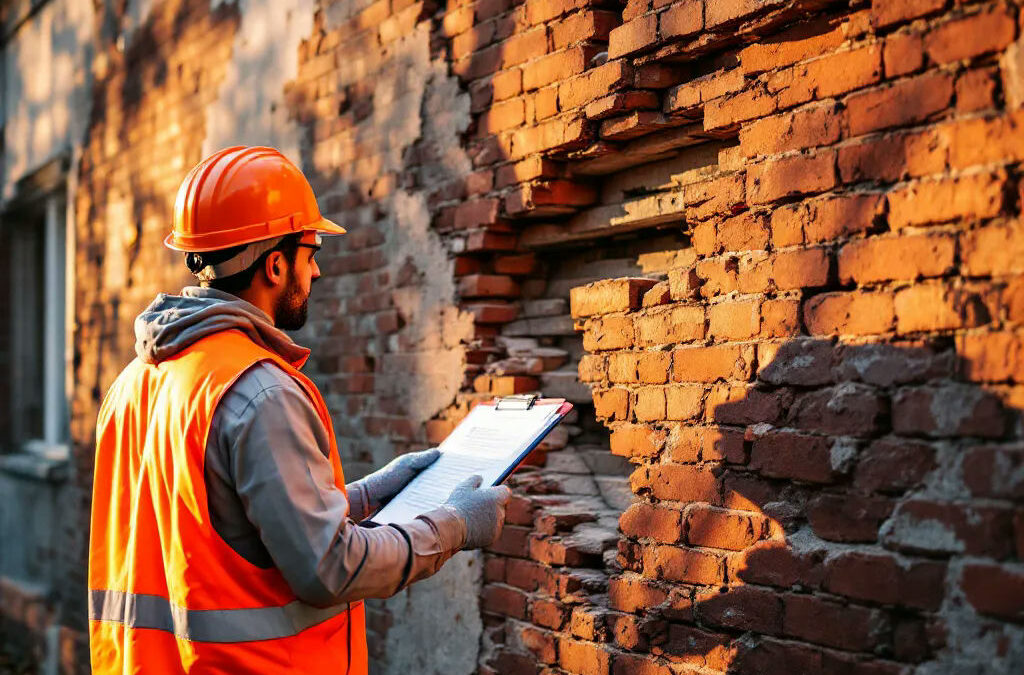I. Introduction
Bulging brick walls are a common yet serious issue that can compromise the structural integrity of your home. By understanding the causes and addressing them promptly, you can avoid costly repairs and potential safety hazards. Maintaining brick structures is vital not just for aesthetic reasons, but also for the stability and longevity of your property.
II. Understanding Bulging Brick Walls
A bulging brick wall occurs when the wall starts to sway outwards, creating an unsightly and dangerous condition. Characterized by uneven surfaces and protruding bricks, this issue can escalate quickly if not addressed. Common signs include visible cracks, mortar deterioration, and a noticeable bowing of the wall.
III. Top Reasons for Bulging Brick Walls
A. Moisture Issues
Moisture infiltration is one of the leading causes of bulging brick walls. When water seeps into the bricks and mortar, it compromises their integrity and leads to expansion and movement. Poor drainage systems can exacerbate this issue, causing excess water accumulation around the foundation and contributing to structural problems.
Related reading: How Weather Affects Commercial Concrete Pours
B. Soil Movement
Soil movement can significantly affect the stability of a brick wall. As the foundation settles over time, it can create uneven pressure, which may result in bulging. Additionally, expansive clay soil, which swells when wet and shrinks when dry, can exert undue stress on foundation walls and lead to bulging.
Related article: Top 7 Mistakes to Avoid in Commercial Concrete Construction
C. Structural Weakness
Aging mortar and brick are often overlooked factors that contribute to bulging walls. As materials deteriorate, they lose their load-bearing capabilities, making them susceptible to movement. Inadequate support structures, whether due to design flaws or insufficient reinforcement, can also lead to instability and bulging.
Further insights: The Importance of Reinforcement in Commercial Concrete Work
D. Environmental Factors
Environmental factors such as extreme weather conditions can accelerate the deterioration of brick walls. Heavy rains, freezing temperatures, or prolonged drought can wreak havoc on brick structures. Additionally, tree root intrusions can disrupt the soil around the foundation, creating uneven pressure that leads to bulging.
Related topic: How Weather Affects Commercial Concrete Pours
IV. Assessing the Extent of Damage
Before undertaking any repairs, it’s essential to assess the extent of the damage. DIY inspection techniques, such as checking for visible cracks, measuring any bowing, and observing changes over time, can provide valuable insights. However, if you notice significant structural issues or extensive damage, it’s crucial to call a professional for a thorough evaluation.
Helpful resource: Pre-Pour Checklist for Large Concrete Jobs
V. Repairing Bulging Brick Walls
A. Temporary Fixes
If you encounter a bulging wall, temporary fixes can provide immediate support until a permanent solution is enacted. Shoring up the wall with props or braces can help stabilize it and prevent further damage. These methods should be seen as temporary measures while you plan for more durable repairs.
Read more: A Contractor’s Guide to Bidding on Commercial Concrete Jobs Profitably
B. Permanent Solutions
For a long-lasting solution, consider repointing mortar joints to restore structural integrity and replacing any damaged bricks. Underpinning the foundation may also be necessary to address underlying soil movement and stabilize the wall. Such repairs ensure that the brick wall not only looks good but also functions properly over time.
See related: What to Expect During a Commercial Concrete Installation Project
C. Preventative Measures
Preventing bulging brick walls can save you from future headaches and expenses. Regular maintenance and inspections are essential for catching issues early on. Additionally, improving drainage around the wall will mitigate water infiltration and reduce soil movement, preserving the structural integrity of your brickwork.
You might also like: How to Choose the Right Concrete Mix for Your Commercial Project
VI. Professional Help vs. DIY Solutions
When addressing bulging brick walls, weighing the pros and cons of professional help versus DIY solutions is critical. DIY repairs can save money but may lack the expertise necessary for complex issues. If you opt for professional assistance, look for contractors with experience, reviews, and a solid portfolio, to ensure quality repairs.
Explore more: Differences Between Residential and Commercial Concrete Applications
VII. Conclusion
Addressing bulging brick walls is essential for maintaining the safety and integrity of your structure. By understanding the causes and knowing how to fix them, you can prevent further damage. Don’t hesitate to take action; the sooner you address these issues, the more effectively you can preserve your brick structure for years to come.
Call us at 916-562-2345 today to schedule a professional inspection and get a no-obligation quote.


